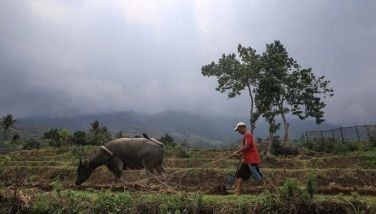Spate of attacks alarms local Indian community
(Conclusion)
Negative view
Whether Indians are targeted because of their race – at least in cases where the perpetrators are local – isn’t clear, although some Indians believe that is the reason why the police do not give them the attention they deserve. A British Broadcasting Corp. poll conducted in October 2005 to January 2006 has revealed that 57 percent of the Filipinos asked had a “mainly negative” view of India’s influence in the world, making the Philippines the only country (among 33 nations) where “such an unfavorable view was most prevalent.” Unfortunately, it does not define what a “negative” view entails.
A news site in
What has landed in some papers are views of the likes of former House deputy minority leader Rolex Suplico that obviously do not help relations between Indians and Filipinos.
Last year, Suplico said he feared that the
“(They’re) everywhere, running their 5-6 business and exploiting our people,” he told a group of reporters. “We have to stop the motorcycle-riding Bumbay Invasion.”
Interviewed recently by PCIJ, Suplico, now
“But, of course,” he says, “they’re entitled to protection.” He then recalls how an Indian who had apparently been robbed once approached him, seeking help in apprehending the perpetrators. As Suplico tells it, the Indian said he didn’t care about the money, but wanted his list of clients’ debts back. Suplico says the Indian has since graduated from going around in a motorcycle to driving a pick-up truck.
There are other Filipinos who see the 5-6 business as usurious, as the interest rates are too high. While the Central Bank suspended the Usury Law in 1983, lifting restrictions on the interest cap and allowing parties to agree on the interest rate, the Supreme Court has ruled that a 66-percent or 72-percent annual interest is excessive and exorbitant. The 5-6 business charges 10 percent per month (20 percent for two months) or 120 percent a year. Using the same rate for a period of 40 days – since Filipinos sometimes prefer a shorter period – the annual interest rate would be something like 182 percent.
From the looks of it, though, it seems that the Indian moneylenders are being targeted simply because the criminals know they carry cash, as well as because of the likelihood that they will not bother going to the police.
Being victims of holdups is also not exactly new to the lenders; Raj Singh says he lost P2,000 to a gun-toting holdupper a decade ago.
Some observers have theorized that there may also be an element of “retaliation” in the holdups because of the high interest rates of 5-6. Filipino small-time borrowers, however, do not seem to mind such rates, since there are few loan sources available to them. A police officer at the
“Kapit-patalim ka kasi (You get desperate),” he says. He adds, however, that Indians are known to be generous and considerate so long as one is a good payee. The officer says that when he had to rush his wife to the hospital in the middle of the night, the neighborhood Indian moneylender, whom he calls his friend, readily gave him the money he needed.
Indian moneylenders are also sometimes preferred by Filipinos over their local counterparts. Indian lenders, most of whom are men, are more discreet, say borrowers. They say that Filipino lenders are usually women who tend to gossip about their clients.
One vegetable and fish vendor in
A tricycle driver who usually has a daily due of P20 to an Indian moneylender at any given time admits to being remiss with his payments occasionally. But he says the Indians “rarely complain. They just say, ‘Okay, tomorrow.’” Other tricycle drivers and market vendors also say the Indian moneylenders do not get “overly angry” or violent, although they say some do get fed up and huff, “You’re all just promises!”
Wiser lender
But the Indians have grown much wiser, say some habitual borrowers. The lenders test the reliability of new clients by making them buy one of their wares, like an umbrella, an electric fan, or a 14-inch TV. These appliances usually have a 100-percent mark-up or higher. But the payment scheme is easy, requiring a daily due of only P20 until the entire amount is covered. If the new client can keep up payments for at least two weeks, the Indian lender then allows him or her to borrow money.
Other Indians nowadays also draft promissory notes signed by lawyers for both new and errant clients. Raj Singh, who heads the lending firm he put up with his Filipino and Indian friends in 2000, sometimes does this. Before, he says, it was all just based on trust. Many moneylenders, however, have had enough of borrowers who move out of their homes without settling their debts.
In
Dhilip Budhrani, vice president of the Indian Chamber of Commerce, agrees that Punjabis in the moneylending business are helping in a way. He also says that Indians – whether Sindhi or Punjabi – have never been treated as outcasts in the
Bhagwant of Khalsa Diwan says that Indians normally enjoy a good relationship with Filipinos. He and his family have been here since the 1970s. But just like Raj Singh, he is now contemplating if it is still worth staying here in light of the increasing attacks against members of their community.
Yet an Indian who declines to be named asserts that many Indian migrants are staying put in the
The Philippine Center for Investigative Journalism has issued a correction in the following sentence of its special report published on Aug. 7: “For sure, such reactions can be traced largely to inaccurate reports, such as one by an Indian newspaper that said as much as 100 Indians were killed in the
The phrase “last year” should have been replaced with “in the past five years.”
- Latest
- Trending
































